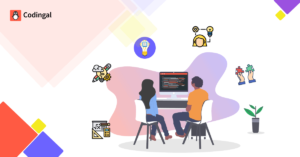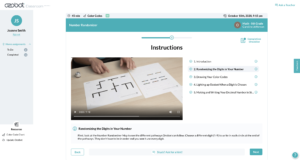Time to Rewrite the Code, But How?

The shift to blended, personalized, and competency-based learning suggests a dramatic change in state education policy. Legislators at the NCSL Jobs Summit in San Jose last week recognized that their state education code is a patchwork of outdated provisions with a few recently won improvements. We discuss the 7 keys to education and employment outlined in Smart Cities. I suggested that states should plan to rewrite their education code. A couple veteran legislators pushed back and asked, “With all the competing pressures, how would that actually work today?
Push or pull? There are two basic change mechanisms. Traditionally, promising practices and pilot projects signaled system wide opportunity; they were codified in a draft bill which was debated and modified in committee. With sufficient public support the bill moved through both houses and was signed into law by a governor.
Nearly every state used this “push” approach to pass standards-based reforms in the 1990s. Beginning with National Education Summits in Charlottesville (‘89) and Armonk (‘96), governors played a critical role in creating legislative momentum. While most were short of a full rewrite, some like Bill 1 in Texas resulted in complete overhaul of the Texas code. “It was a unique confluence of circumstances that allowed that to happen,” said the former Governor’s aide Todd Webster. “You had a prominent R in the Senate and a prominent D in the House both agree that a rewrite was necessary.”
Best practices from these state bills were rolled up into the 2002 ESEA reauthorization called No Child Left Behind. While it seems daunting to consider mounting another effort of this scale, one can see a throughline from A Nation at Risk (’83) to NCLB (’02)–and these bills continue to be the basic framework for American K-12 education.
While conceivable, one big bill replacing the bulk of the ed code would be enormously challenging. “The idea is that the omnibus bill will generate more support as everyone gets something they want,” said David Ruff, Great Schools Partnership. “Unfortunately, our experience is that while there is something everyone likes, there is almost always something that everyone hates.”
“I think we are close but not quite ready for a total overhaul of the education code,” said Chris Sturgis, co-founder of CompetencyWorks. She thinks divisiveness in the policy discussions about education is too large. Before a new education code can be devised the different advocates and stakeholders need to be able to listen and respond to each other’s concerns.
Michael Horn, Christensen Institute, agrees that “sunsetting the ed code completely and rewriting from scratch is probably not only undesirable from a ‘we don’t actually know what it should all look like, nor will we get the ideal’ perspective, but also that it would be seen in essence as a direct attack on today’s system, and the ed code is such that it protects lots of constituencies and ways of doing things that would naturally be threatened (rightly or wrongly) by the new order.”
In their new book Blended, Horn and Staker describe a “design planning” approach that some districts have used to write their policies. They build a multi-year calendar to reconsider every policy. This approach is appropriate “when launching something unfamiliar and unpredictable, for which the ratio of knowledge to hypotheses is low, educators need to change the planning and design process.” It’s conceivable that this approach could work in a small politically stable state.
The alternative to push model policy is prizes and pull mechanisms which use invitations (e.g., RFP) and incentives (e.g., prizes, grants, waivers) to induce new policies, behaviors and structures. Race to the Top (part of the 2009 recovery act) was the biggest and most successful grant program to produce a package of policy reforms in a large number of states.
To some extent, charter school laws are a pull mechanisms, inviting new proposals (sometimes in target geographies) using policy waivers and independence as incentives. The pull is usually strong enough to (at least partially) offset lower funding and poor facilities access.
Ted Kolderie has suggested a similar split screen strategy where some schools focus on improvement while others develop innovative approaches. ReSchool Colorado looks like a split screen approach to shelter innovative new schools.
John Bailey, Foundation for Excellence in Education, suggests that states create an innovation zone to free districts or networks from state and fed accountability in return a set of commitments which could include:
- Competency-based student progression;
- Commitment to using a blended learning model;
- Weighted, flexible, portable, performance-based funding;
- Full operating and facilities support of charter schools;
- Performance guarantees: any post high school remedial costs would have to be paid by the district.
Michael Horn, concurs about the importance of a new policy structure to protect innovation. He notes that Florida Virtual School “was uniquely positioned to build a business model in which they took in revenue upon successful course completion.” And, “Any funding model that looks remotely like this is a non-starter for a traditional school because of how its business model is shaped around time.
The zone strategy could be implemented by an a statewide authorizer using performance contracting to engage districts, networks, and schools in experiments with new delivery strategies, talent development structures, and measurement systems. With a combination of pressure and incentives, a performance contracting approach could, over 5 or 10 years, become the primary delivery and accountability system for the state.
Districts could join the zone the way Fulton County Georgia became a charter district. Schools could join a network using a new measurement system like 28 high schools in The New York Performance Standards Consortium (but with stronger performance guidelines for opting into next gen learning not just a opt out of testing). The zone could operate as a statewide governance structure like the Louisiana Recovery School District and eventually become the new policy set and delivery system as all schools and providers joined.
Through a combination of allowing schools to leave their district and join the innovation zone and encouraging consolidation, most states will want to address the inefficient number of districts (e.g., 520 in Oklahoma). If the state decided it was time to separate facilities from operations and to push real autonomy and weighted funding directly to schools through a performance contract, it would leave a smaller role for local education authorities (similar to UK reforms).
Executive action. It’s worth noting that the state board and the executive branch can play a pivotal role in reform and innovation. In some cases, state boards have significant authority particularly when it comes to graduation requirements. In 2005, the New Hampshire state board shifted from seat time to a competency-based diploma.
Rhode Island Chief Deborah Gist struck partnerships with Highlander Institute and The Learning Accelerator to become a blended learning state.
Where to start? It always makes sense to start with student learning goals. “I like the idea of starting with graduation requirements as this is a huge leverage point,” said David Ruff. “We are not telling schools how to teach, but rather, how the state coordinates what it means to graduate.” Ruff worked with New Hampshire and Vermont on new proficiency-based graduation requirements and is working with Connecticut on theirs.
On preconditions for success, Ruff thinks policy needs to start by allowing or promoting specific actions: ”This can then be used to create some examples of success,” and “it is very hard, if not impossible, to get significant policy through without local examples to prove it.”
Utah Senator Howard Stephenson, a champion of personalized learning, is a big believer in pull mechanisms. Bills he has co-sponsored have made vetted software tools available to about a third of Utah schools. Leading schools have adopted the software, implemented it with fidelity, and are seeing significantly improved results. Michael Horn thinks “anything that has a pull mechanism–where people want to opt in, works with their incentives, how they are structured, will have the least uphill push.”
Horn is a big proponent of experimenting in areas of what he and Clay Christensen call “non-consumption.” Working at the edges of the system makes adoption and experimentation less contentious. Horn is optimistic that expanding part time online learning (Course Access) is a productive entry point. “My hope for Course Access has been that it creates that space for us to figure out the right policy and incentive set that the system would, over time, move into. (See Making the Most of State Course Access Programs). Alternative and career and technical education (CTE) and world languages are other lower-stakes areas that viable statewide entry points for next gen learning. Sturgis agrees with this approach, suggesting that districts can increase innovation and increase graduation rates by focusing on over-age, under-credited students.
Barriers. Innovation-friendly legislation will face obstacles from expected and unexpected sources. Chris Sturgis advocates for students that haven’t been well-served in the No Child Left Behind era will be skeptical of personalization and competency-based progressions. She emphasizes that it is important for the next generation reforms to demonstrate a commitment to equity and documentation of effective practices. For the the disability rights and English Language Learner communities to become advocates for revising the education code they need to know specifically how new approaches will benefit their special populations and be confident that high quality implementation will produce results.
Investment in innovation is often opposed based on budget grounds. “Carving out resources and making it non-threatening such that it doesn’t get co-opted is difficult,” said Michael Horn.
“Where there is little agreement on the goals we want out of something and little agreement on how the world works, that tools of democracy will not get us to where we need to go,” Horn added. This suggests a more opportunistic approach in situation where a leadership team could deploy change quickly. Like Texas in 1995, that could mean having a well developed plan in place can could be launched when there is a period of uniquely strong political alignment.
In the long run “migrating to tools of democracy and inclusion through demonstrated success a really important part,” said Horn, “as success occurs and agreement on goals and how the world works is built.”
Next gen conversation. In June, the Aspen Institute Task Force on Learning and Internet issued a report that describes a vision for a new education delivery system that places the student at the center of a set of interconnected networks. It’s an example of a useful conversation starter about the learning revolution that is surrounding a dated system and code.
Community conversations about the opportunities of next generation learning are a great place to start. Chris Sturgis thinks “highlighting the assumptions and constraints in the current code, asking probing questions so that people can engage in thinking about what else is possible is in fact a valuable process to engaging people.” For two years I’ve been asking people about the benefits and concerns about the shift to next gen learning and, as Sturgis predicts, “it allows people to raise fears. Many of those fears are in fact issues that need to be addressed in some way for us to learn how implement next gen education effectively.”
The learning revolution is well under way and the opportunity set improves every month. The experts agree that we’re in the early innings and that a full rewrite of the ed code would be difficult and may be premature. However, it is clear that creating spaces for innovation to flourish is critical to local and state progress. If well constructed, this sort of innovation zone could provide a long term migration path for development of the learning services our students and communities deserve.








0 Comments
Leave a Comment
Your email address will not be published. All fields are required.